#celtic belief
Explore tagged Tumblr posts
Text
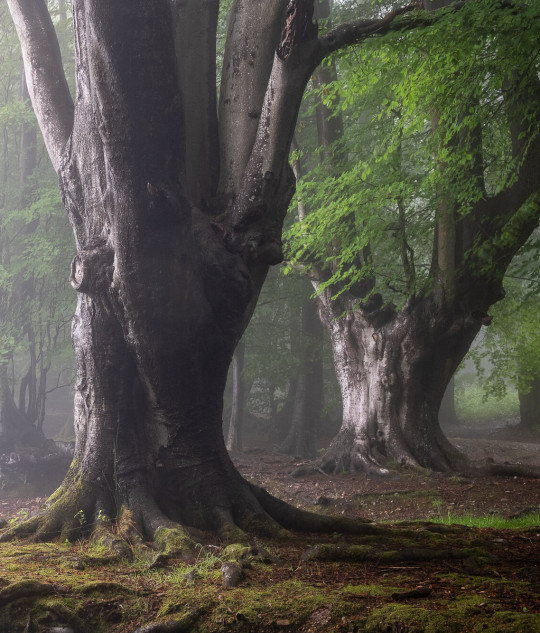
Legends and myths about trees
Celtic beliefs in trees (28)
Ph for Phagos (Beech) - all year around, the Celtic Tree Calendar (Ref)
Stars: Mercury, Saturn; Gender: female; Element: air, earth; Patrons: Ogma, Thoth, Hermes, Mercurius, Odin, Kronos; Symbols: learning + knowledge, wisdom + understanding, prosperity
The beech tree is a tree of learning, a symbol of prosperity and success. When walking through a beech forest, the large trees with the smooth, silver-grey bark and the curves created by the trunk and branches are like a living elephant or rhinoceros, giving you a sense of relief all year round.
In spring, the beech forests are bright and breezy, and the bluebells are in full bloom, the contrast between the dazzling young leaf colours and the blue announces that ‘spring has come’. In spring, the beech spreads soft, translucent, golden-green leaves with a fan-like shape, and in summer these leaves eventually become hard and dark green in colour, changing to yellow, reddish brown or golden in autumn. It is an essential tree for the forest.
The beech tree symbolises the written word, human innate wisdom and ancient knowledge. In olden times, writing was written on beech wood, and the first books were made by binding thinly cut beech wood. Before that, they were scrolls.
The beech tree is associated with deities of wisdom, knowledge and intelligence, such as Odin in Norse mythology, who brought us the runes, or the inventor of the Ogham script; the great warrior of the Tuatha Dé Danann; the monstrous strength of the eighty oxen; and the Celtic god, the sun-faced Ogma. And because of its connection with the creation of the secret code alphabet, it is also a symbol of divination and prophecy.
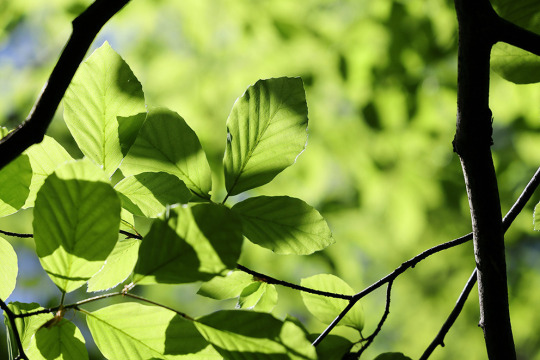
ケルト人の樹木の信仰 (28)
Ph は Phagos (ブナ) - 1年中、ケルトの木の暦(参照)
星: 水星、土星; 性: 女性; 要素: 空気、土; 守護神: オグマ、トト、ヘルメス、メルクリウス、オーディン、クロノス; シンボル: 学習+知識、知恵+理解、繁栄
ブナの木は、学びの木、繁栄と成功の象徴でもある。ブナの森を歩くとき、その大木は銀灰色のした滑らかな樹皮、幹や枝がつくる曲線はまるで生きた象か犀のようで、一年中安堵感を与えてくれる木だ。
春、ブナの林の中は明るく風もよく通り、ブルーベルが一面に咲き誇り、眩い若葉色とブルーのコントラストに「春が来た」ことを知らせてくれる。春になると、ブナは半透明の柔らかい金緑色の葉を扇状に広げ、やがて夏にはこの葉が硬くなり濃い緑色になり、秋には黄色、赤褐色、金色へと変化していく。森になくてはならない木だ。
ブナの木は書かれた文字、人間が生まれつき備えている知恵、古代の知識を象徴している。ブナの木は、ルーン文字をもたらした、北欧神話のオーディンや、オガム文字を発明し、トゥアサ・デー・ダナンの偉大な戦士で八十頭の牛にも勝る怪力の持ち主、ケルトの神である太陽の顔を持つオグマなど、知恵、知識、知力をつかさどる神々と関連している。そして秘密の暗号アルファベットの創造と関係があることから、占いや予言の象徴ともなっている。
#trees#tree myth#tree legend#folklore#mythology#beech tree#celtic tree calender#celtic belief#ogma#tree of wisdom#art#nature
127 notes
·
View notes
Text

A WIP of a devotional art piece we are doing for Cernunnos.
(Please understand that we have OSDD and use plural pronouns because of it)
We were raised in the American Evangelical Chruch. But we always felt a pull to the woods, to the old faiths. Our early 20s were a hellscape but it led us to Cernunnos. And omnist beliefs in general. We believe in all faiths but Cernunnos remains as our patron God above any other Gods we believe in and work with.
This piece is more or less representative of how it felt finding him for the first time. We felt a form of protection, and faith, and peace, that we had never felt before.
Thank you Lord Cernunnos. For saving our life and giving it purpose.
And so it shall be.
5 notes
·
View notes
Text

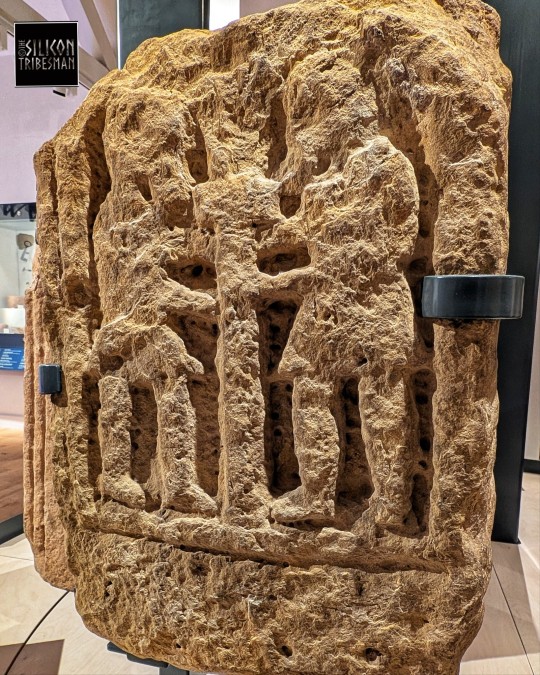
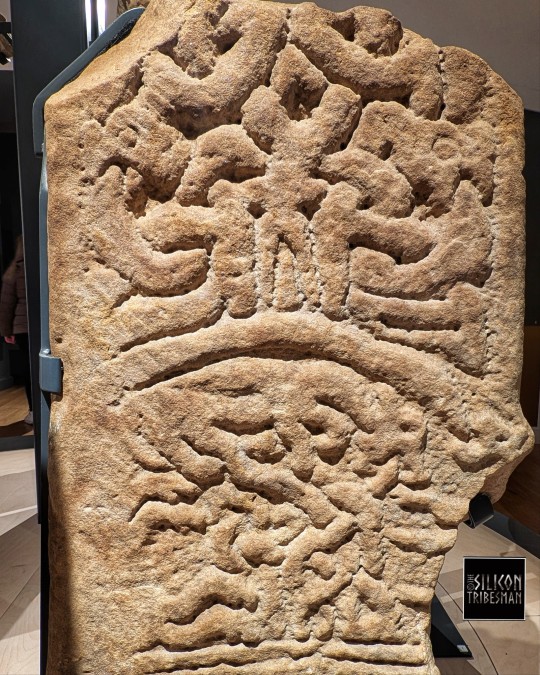
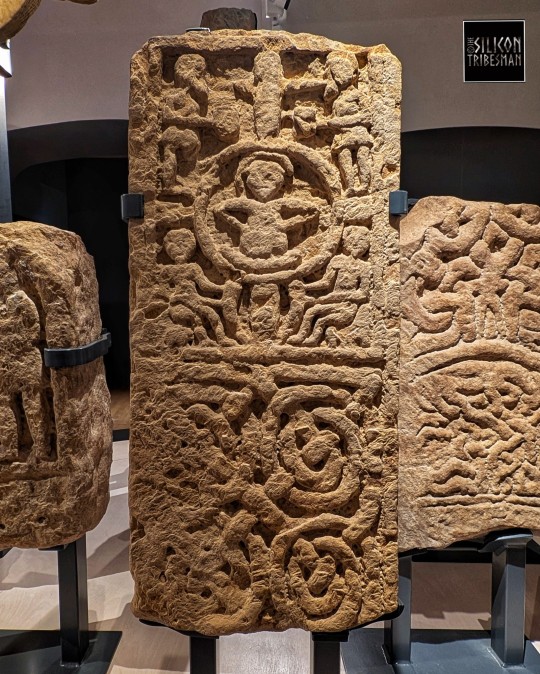
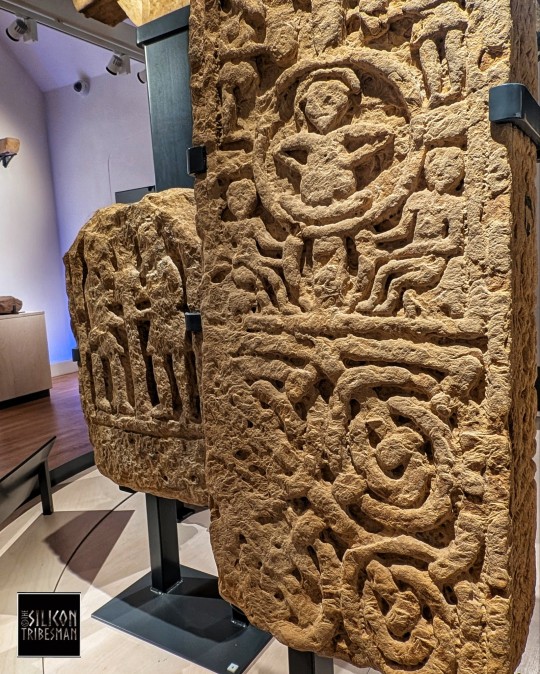
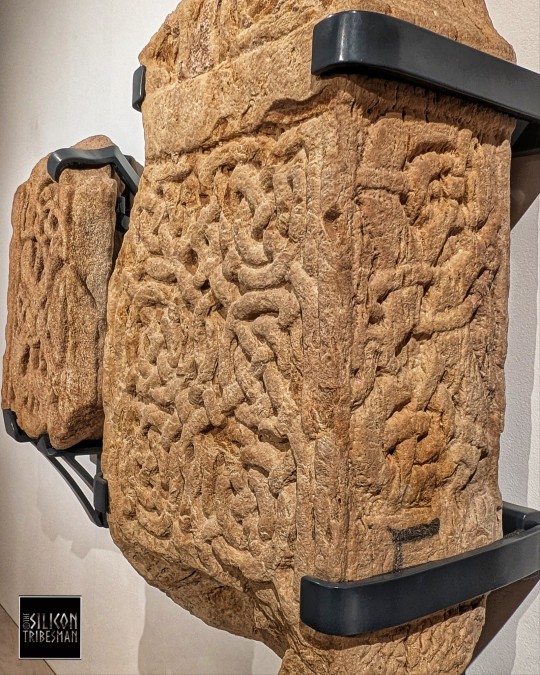

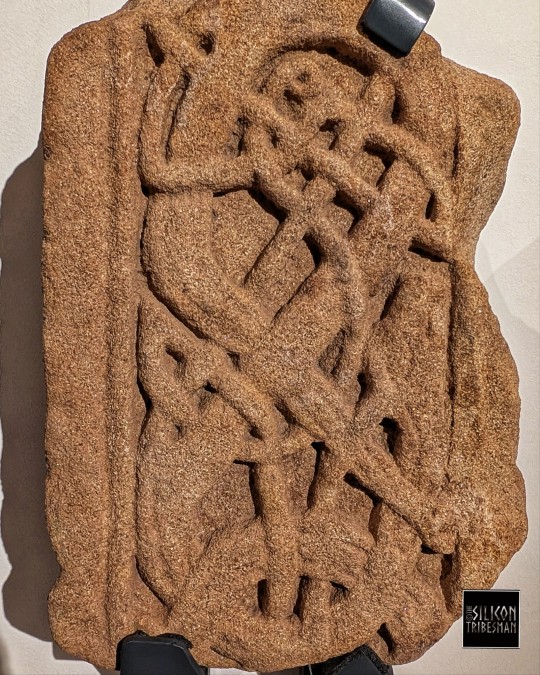
Early Medieval Cross Shafts and Carved Stones, Lindisfarne Priory and Visitor Centre, Lindisfarne, Northumberland
#early christianity#early beliefs#archaeology#ancient cultures#ancient design#ancient texts#ancient living#lindisfarne#Northumberland#symbols#knotwork#celtic knot#interlaced#cross shaft#early cross
115 notes
·
View notes
Text
To give the gods and deities offerings, do they see us as we see crows bringing them shiny things?
#hellenic deities#deity work#deity worship#apollo deity#hermes deity#hypnos deity#aphrodite deity#loki deity#greek deities#norse deities#gods and deities#celtic deities#pagan deities#hindu deities#thracian deities and beliefs#roman deities
358 notes
·
View notes
Text
Trying to figure out if I'm pagan or atheist is so frustrating it's funny cause like. I don't believe in any gods persay, but I am more inclined to believe in the old gods than the Christian god, and the practices and beliefs surrounding them just feel right. Like, I just instinctually view holidays like Samhain or Beltane as Correct and celebrate them as best I can, but I don't actually believe in the gods, so can I call myself pagan?? Or am I just atheist with a special interest?? But it feels like so much more than that it really does
#just UGGGGH why can't the world just hand me a label that feels right#because I don't WANT to stay in the “nah I don't use a specific label I'm just inbetween” place that I am now#I want to be able to describe myself with one simple word instead of this whole 5 paragraph essay on my beliefs#but it feels disrespectful to say Pagan cause#I don't actually believe in gods????#but also if I did I'd believe in celtic/irish pagan gods#because in my brain those are the Correct Ones#help what am I 😭😭#pagan#atheist#paganism#atheism#celtic paganism#religion#also is “the old gods” the correct term? pretty sure it is cause I see people use it all the time but I don't actually Know
10 notes
·
View notes
Text

#fairy faith#celtic#Eldritch#Underhill#meditation#poetry#philosophy#mysticism#supernatural#transcendence#essay#agnostic#belief
5 notes
·
View notes
Text
Unveiling the Spellbinding Origins of Halloween Shaina Tranquilino October 30, 2023
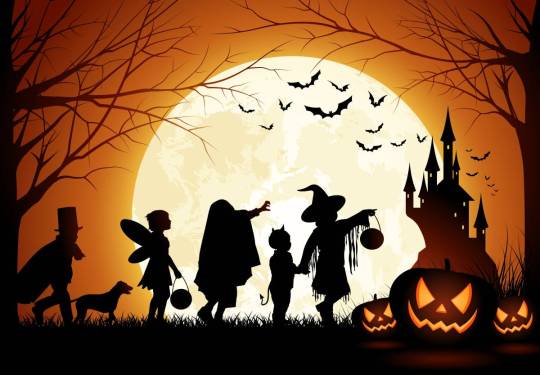
As orange leaves flutter to the ground and jack-o'-lanterns flicker in the night, it's undeniable that Halloween has become a beloved, spine-tingling celebration worldwide. But have you ever wondered about the bewitching origins hiding behind this enchanting holiday? Join us on a captivating journey as we unravel the mysterious history of Halloween.
Ancient Roots: The roots of Halloween can be traced back over 2,000 years to an ancient Celtic festival called Samhain (pronounced sow-in). Celebrated by the Celts in Ireland, Scotland, and parts of Britain, Samhain marked the end of summer and welcomed the harvest season. On October 31st, they believed that the boundary between the living and dead blurred, allowing spirits to roam freely among them.
Trick-or-Treating Takes Shape: During Samhain festivities, people would dress in costumes made from animal hides, attempting to ward off evil spirits or disguise themselves from mischievous entities. They also lit bonfires as a form of protection against malevolent forces—a tradition that still echoes today with our glowing Jack-o'-lanterns.
Christian Influence: In the 9th century A.D., Christianity began spreading throughout Celtic lands. Pope Gregory III designated November 1st as All Saints' Day or All Hallows' Day to honour saints and martyrs who didn't have their own feast day yet. To integrate pagan traditions into Christian practices and discourage Celtic rituals during Samhain, November 1st became known as All Hallows' Eve—the precursor to modern-day Halloween.
Ghostly Evolutions: As time progressed, various customs blended together to shape Halloween into its present form. In Medieval England, "souling" emerged when beggars went door-to-door offering prayers for departed souls in exchange for food or money—a practice that later inspired modern-day trick-or-treating. Similarly, in Scotland and Ireland, "guising" appeared, with people dressing up in costumes to perform songs, poems, or tricks for treats.
The Immigrant Influence: Halloween as we know it today found its way to North America through Irish and Scottish immigrants during the 19th century. In the United States, these traditions merged with Indigenous harvest celebrations and other European customs. The result was a uniquely "American Halloween"—a time of community gatherings, parties, parades, and spooky festivities that captured hearts across the nation.
Modern-Day Celebrations: In recent decades, Halloween has gained immense popularity worldwide. It has evolved into a holiday celebrated by people of all ages—both young and old. Festivities range from creatively carved pumpkins to haunted houses, costume parties to horror movie marathons—all embraced as part of this spirited celebration.
As darkness descends on All Hallows' Eve each year, we're reminded of the fascinating history behind Halloween's enduring magic. From ancient Celtic rituals to religious adaptations and cultural exchanges, this captivating holiday has grown into an enchanting blend of tradition and fun.
So whether you find yourself mesmerized by ghostly tales around a bonfire or joining the chorus of tiny witches and superheroes chanting "trick-or-treat," remember that Halloween is more than just costumes and candy—it's a bewitching journey through time connecting us to centuries-old customs and shared human experiences.
#Halloween#Halloween Origins#Halloween History#Samhain Traditions#Celtic Festivals#Pagan Roots#All Hallows Eve#Ancient Beliefs#Harvest Celebrations#October 31#October#Spooky season#Happy Halloween#Trick or Treat#jack o lantern#spooky#spooky time#hello october#autumm
21 notes
·
View notes
Text
at least we have the low road
#there's an old celtic belief that when someone dies in a foreign land their soul returns to scotland via the “low road” of death#hence loch lomond's “you'll take the high road and I'll take the low”#noura's extra personal tag
8 notes
·
View notes
Text

Legends and myths about trees
Celtic beliefs in trees (21)
E for Eadha (Aspen) - September 21st Autumn Equinox
“Whispering tree, also known as Trembling tree - Autumn Equinox of the Celtic Tree Calendar (Ref), when moving into darkness”
Star: Pluto, Mercury, Saturn: Gemstone: black opal,; Gender: female; Patron deity: Persephone, Hades; Symbol: listening, overcoming fear + courage, shield, light in the darkness
Aspen trees are all native to cold regions with cool summers, in the north of the northern hemisphere, extending south at high-altitude areas such as mountains or high plains.
The aspen is referred to as quaking aspen or trembling aspen because the leaves "quake" or tremble in the wind. This is due to their flattened petioles which reduce aerodynamic drag on the trunk and branches, so that they catch any slight breeze, making the leaves tremble, flutter and make a soft, rustling sound each time they do so. In autumn, the leaves turn bright yellow and sometimes red, and when they fade further and turn black, they fall off.
The ancient Celts believed that the wind was a messenger of the word of the gods and therefore considered anything that was in tune with the wind sacred. The same is true of the aspen tree. The aspen, which has the best ears of all trees, always rustled its leaves in response to the voice of the gods.
However, the aspen, with its close connection to death and the underworld, came to be regarded as a tree of misfortune. In earlier times, corpses and graves were counted with a cane made of aspen named fé, and people were terribly afraid of the calamities that would befall them if they were struck with this cane. The connection with the seasons, rest and rebirth was often overlooked, and many people, cowering in fear, heard only the abominable sound of aspen leaves rustling in the wind. However, the teachings of the aspen are about overcoming the fear of death, the fear of the unknown and fear itself. The aspen was called the 'shield tree' by the Irish Celts, and is said to have been their favourite tree for making shields. This was not only because aspens provided a reassuring shield, but also because they protected us from flinching in the face of the unknown, once we had taken their teachings to heart.
Incense made from aspens is burned continuously during Halloween (Celtic festival of Samhain). Halloween is the time of year when the distance between this world and the underworld is at its closest, and the period that ushers in the new year. Samhain is also the festival of the New Year, which takes place on November the 1st, the beginning of the year, but it is also the festival of the dead. It is believed that during nights between the end of the year and the beginning of the new year, the border with the other world disappears, the souls of the dead visit their relatives, and demons and evil spirits cause damage to crops and livestock.
Ancient Celtic cultures were known to carve turnips or potatoes and place embers inside to ward off evil spirits. That's because Ireland didn't have pumpkins. In England, large beets were used. When immigrants brought over their carving tradition, Americans began carving jack-o'-lanterns from pumpkins.
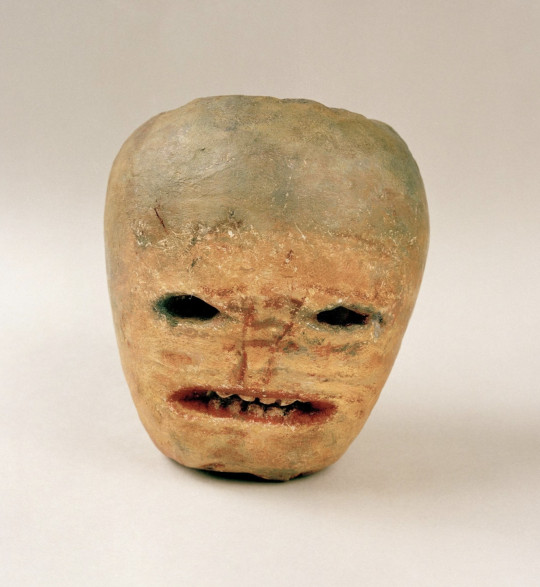
木にまつわる伝説・神話
ケルト人の樹木の信仰 (21)
EはEadha (ポプラ) - 9月21日・秋分の日
『ささやきの木、震える木 〜 ケルトの木の暦(参照)・秋分、暗闇に移るとき』
星: 冥王星、水星、土星: 宝石: ブラック・オパール、; 性: 女性; 守護神: ベルセポネ、ハデス; シンボル: 聞くこと、恐怖の克服+勇気、楯、暗闇の中の光明
ポプラ (セイヨウヤマナラシ‘山鳴らし’) の木はすべて、北半球の北部で夏が涼しく寒い地域に自生し、南は山や高原などの標高の高い地域に広がっている。
ポプラは、葉が風で「震える」ことから、山鳴らしと呼ばれている。これは、幹や枝の空気抵抗を減らすために葉柄が平らになっているためで、どんな微風もとらえ、その度に葉は震え、はためき、さらさらと柔らかな音を立てる。秋になると、葉は鮮やかな黄色に色づき、時には赤くなり、さらに色あせて黒くなると落葉する。
古代ケルト人は、風は神の言葉を伝える使者と信じていたため、風と同調するものは何でも神聖視していた。ポプラの木も同様だ。すべての木の中で最も優れた耳を持つポプラは、いつも神の声に応じて葉をそよがせていたのだ。
ところが、死や地下の国とつながりの深いポプラは、不幸を招く木とみなされるようになった。その昔、死体や墓はフェという名前の、ポプラでできた杖で数えられていたし、この杖で打たれると災難がふりかかると人々はひどく恐れていた。四季、安息、再生との関わりはしばしば見過ごしにされ、恐怖に身をすくませた多くの人たちは、風��そよぐポプラの葉音に忌まわしい声だけを聞き取った。しかし、ポプラの教えは、死の恐怖、未知なるものへの恐れ、そして恐怖心そのものを克服することにあるのだ。ポプラは、アイルランドのケルト人に「楯の木」と呼ばれ、彼らが楯をつくるのに最も好んだ木と言われている。それは、ポプラが単に心強い防具になっただけに留まらず、ひとたびポプラの教えを我がものとしたなら、未知なるものを前にしてもたじろがないように守ってくれたからに他ならない。
ハロウィン (ケルトのサウィン祭)の期間中、ポプラから作られたお香が焚かれ続ける。ハロウィンは、現世と冥界の距離が最も近くなる時期であり、新年を迎える期間でもある。サウィンは、1年の始まりである11月1日に行われる新年の祭りでもあるが、同時に死者の祭りでもある。年末から新年が始まるまでの夜は、あの世との境界がなくなり、死者の魂が親族を訪ね、悪魔や悪霊が農作物や家畜に被害を与えると信じられている。
古代ケルト文化圏では、悪霊を追い払うためにカブやジャガイモを刻んで中に燠火を入れていたことが知られている。アイルランドにはカボチャがなかったからだ。イギリスでは大きなビーツが使われた。移民がカボチャを彫る習慣を持ち込むと、アメリカ人はカボチャからジャック・オー・ランタンを彫るようになった。
#trees#tree legend#tree myth#folklore#celtic tree calendar#celtic belief#aspen#trembling aspen#quacking aspen#Samhain#jack o lantern#celtic traditions#nature#art#whispering tree#autumn equinox
114 notes
·
View notes
Text
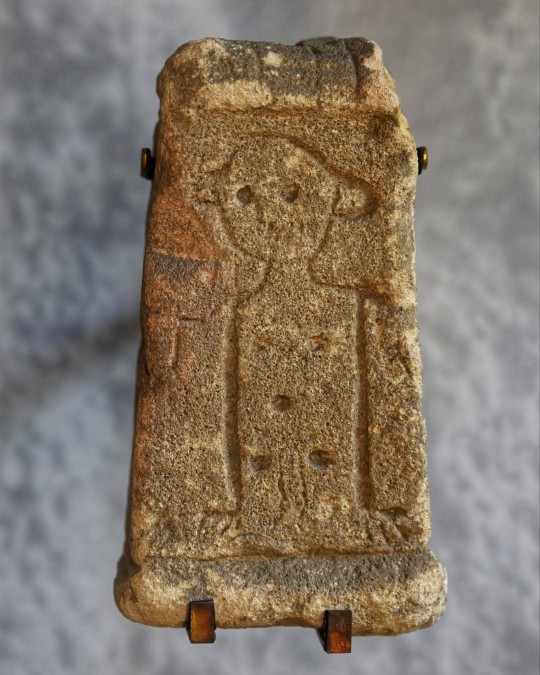
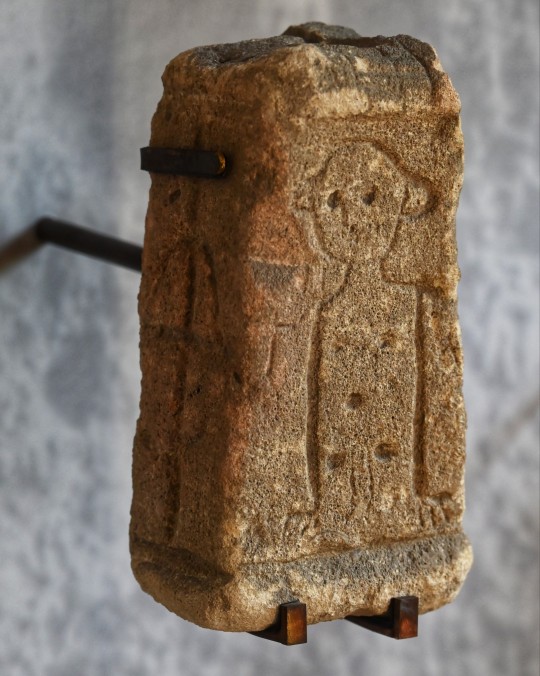
Roman Portable Shrine, Chedworth Roman Villa, Gloucestershire
One of several small altars believed to be deliberately portable, and so able to travel with individuals or families, The god is believed to represent Mars Lenus, a deity who was a Roman and Celtic amalgamation. The recessed dots would have been filled with colour, marking out the eyes, nipples, navel and genitalia.
#roman#romans#roman belief#roman living#roman army#roman design#roman archaeology#roman culture#stonework#stonecarving#celtic gods#celt#celtic#archaeology#Chedworth Roman Villa#Gloucestershire#relic#artefact
1K notes
·
View notes
Text

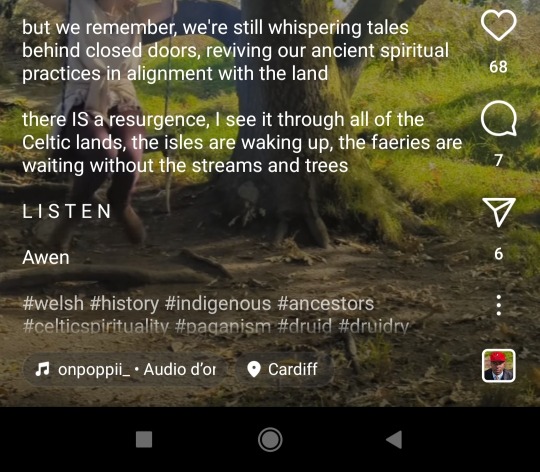
*Screams in Celtic academia*
#There's so much to unpack but the refusal to acknowledge you are *inventing* a spirituality and not reviving one is the main point#“The faeries are waiting” well then freaking RUN darling#Supernatural beliefs are NOT spirituality#Stop erasing the deeply Christian history of celtic cultures#Celtic spirituality means everything and NOTHING#Druids???#Oh yes so you've made a coherent whole of 3000 years of history my bad#Celtic#Wales#This truly reminds me of white Buddhism
5 notes
·
View notes
Text
A Whisper of Spring – The Robin’s Blessing
Today, I felt the first real touch of spring. For the first time this year, I sat outside on a terrace without a jacket, basking in the soft warmth of the sun. It wasn’t harsh or blinding—just the perfect golden glow that hints at the changing seasons. And then, as if the moment wasn’t magical enough, a little robin landed on the back of the garden chair right across from me. I was thrilled! I…
#Ancient Traditions#animal messengers#bird mythology#Celtic animal symbols#Celtic Mythology#change of seasons#cultural bird beliefs#German folklore#mythology and natureure#nature symbolism#Norse mythology birds#Norse traditions#robin and luck#robin folklore#robin omen#robin spiritual meaning#robin symbolism#robins and the afterlife#seasonal change#signs from nature#spiritual animals#spring omens#spring renewal#wildlife myths
0 notes
Photo

HALLOWEEN AND SAMHAIN: NO ROOM FOR COMPROMISE! -- a Bill's Bible Basics Article #Christian #BibleStudy #Jesus This #BillsBibleBasics article by #BillKochman can be read at: https://www.billkochman.com/Articles/hallowen.html https://www.billkochman.com/Blog/index.php/halloween-and-samhain-no-room-for-compromise-a-bills-bible-basics-article/?feed_id=256926&HALLOWEEN%20AND%20SAMHAIN%3A%20NO%20ROOM%20FOR%20COMPROMISE%21%20--%20a%20Bill%27s%20Bible%20Basics%20Article
#All_Posts#New_Articles#articles#beliefs#bible#bible_study#bill_kochman#bills_bible_basics#celtic#christian#graphics#halloween#king_james_version#kjv#pagan#religion#samhain#scriptures#series#verse_lists#verses#works_of_darkness
0 notes
Text
youtube
🎃 ULTIMATE Halloween Trivia Quiz | 31 Questions to Test Your Spooky Knowledge
Think you know everything about Halloween? Put your knowledge to the test with these 31 spine-tingling trivia questions! #quiz #trivia #halloween
#halloween trivia questions with answers#halloween history quiz multiple choice#spooky halloween facts test#halloween traditions trivia game#samhain history quiz questions#salem witch trials trivia questions#halloween superstitions quiz answers#halloween candy facts trivia#celtic halloween traditions quiz#ghost stories trivia questions#halloween mythology test questions#halloween customs quiz answers#trick or treat history trivia#jack o lantern origin quiz#halloween party game questions#scary movie trivia halloween#haunted house facts quiz#halloween symbols meaning test#halloween monsters trivia game#spooky season knowledge test#halloween around the world quiz#supernatural beliefs trivia#halloween fun facts challenge#halloween legends quiz questions#halloween folklore trivia test#Youtube
1 note
·
View note
Text
Part of what really makes the allure and the taboo and just absolutely haunting pondering of our place in society and the cosmos when it comes to cannibalism is not really just the consumption of Human Flesh. It's how the person died, too. How they were treated beforehand.
#beablabbers#I would assume you rarely if never get that horrifying thing of someone being hunted down like an animal in rl#even in cultures that did practice ritual murder with cannibalism afterwards#and I feel cannibalizing a body/keeping a trophy around after you killed them in war/a conflict is different#thinking of shrunken heads and celtic beliefs about the head as the seat of the spirit and power#and well survival cannibalism in nearly all stories I know is very human#still terrifying but the care people are treated with after death ... no one is EVER keen on drawing straws ...#cause dying on your lips is how I wanna go
1 note
·
View note
Text
Fright Knight: Seize him!
Dan: Wait, wait, wait. Seize him? Did you really just say that?
Fright Knight: I-
Dan: We are up against THE Batman and you embarrassed me by shouting "seize him" as a battle cry? What is this the 1500s?
Danny: Actually, 1500s wouldn't be correct. See,Halloween can be traced back 2000 years ago in Celtic roots-
Dan: No one cares about the few fun facts you know, Danny.
Danny: Well excuse me for appreciating history!
Fright Knight: My Kings-
Dan: Appreciating history!? You failed your last history test!
Danny: test results aren't accurate representation of subject enjoyment! I'm sorry I don't find wars interesting! Maybe, I like learning about how cute humans are and where certains beliefs develop instead of always reading about battles where thousands perished!
Dan: Wars have a tendency of shaping human history! Usually for the worse but we need to study them as to not forget thier horror and learn from the mistakes commited that led up to them!
Danny: Oh you would know all about mistakes and horrors wouldn't you!
Dan: YOU'RE ADOPTED
Fright Knight: My Kings! Batman has broken though the first line of defense!
Danny: IM NOT ADOPTED! YOU'RE ADOPTED!
Fright Knight: Batman is getting closer! Oh gods, there are more of him! We're surrounded!
Dan: MOM FOUND YOU ON THE SIDE OF THE ROAD
Danny: DAD FOUND YOU IN THE DONATION BOX AT A CLOSED DOWN CLOWN FACTORY
Fright Knight: They took out our second and third defenses! NO, THEY GOT LAWRENCE.
Danny: YOU'RE MOTHER WEARS TOO MUCH MAKEUP
Dan: YOUR FATHER DRESSES LIKE THE STREET CORNERS ARE TOO EXPENSIVE
Fright Knight: The Robins! They're everywhere! What are they!? DO THEY NOT FEEL FEAR?!
Dan: YOUR SISTER-
Danny: *gasp* Don't bring Jazz into this.
Dan: You're right. I'm sorry, that was too far. Hey where did Fright Knight go?
Fright Knight: *Screaming as multiple costume wearing humans curb stomp him*
Danny: It looks he could not seize Batman
Dan: It's darn shame when that happens.
#dcxdpdabbles#dcxdp crossover#from a fic i never wrote#Danny and Dan bicker like siblings#You're adopted was always the trap card#Bruce and his kids have fougt gods before#they took out the “invading” forces rather quickly#Fright Knight proceed to unionized the ghosts in the Kings' service after this#Dan and Danny in Gotham by accident
2K notes
·
View notes